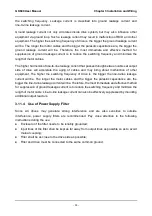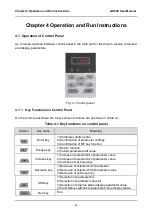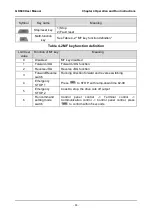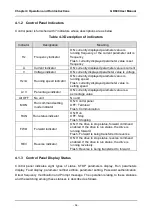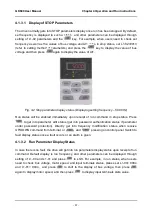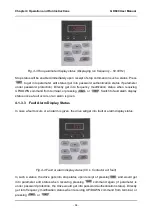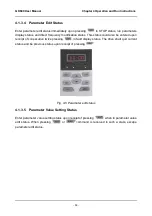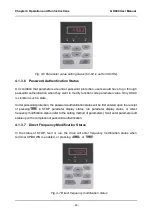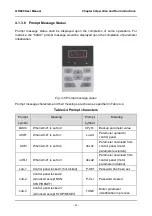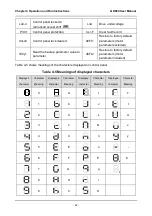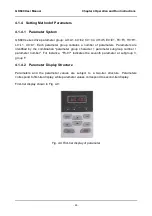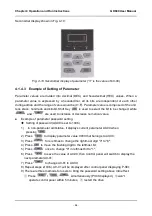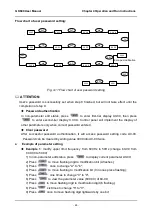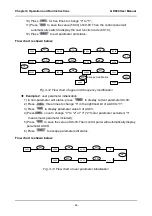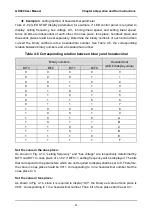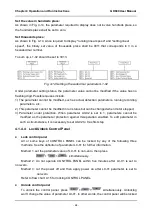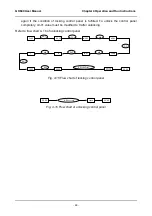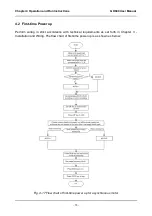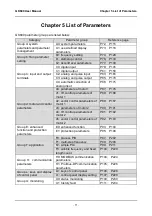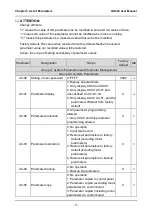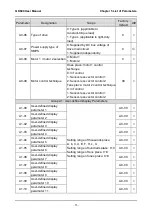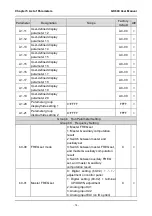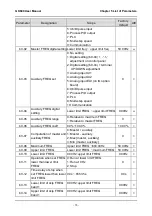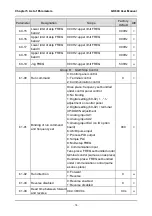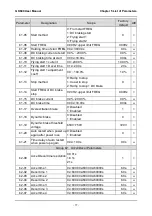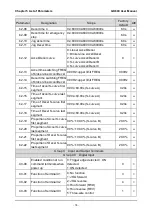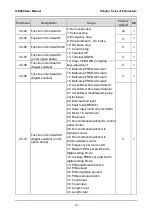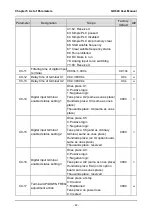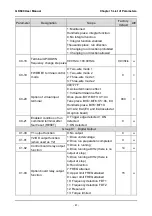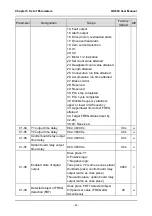
GK600 User Manual
Chapter 4 Operation and Run Instructions
- 67 -
Example 3
: setting method of hexadecimal parameter
Take L1-02 (LED STOP display parameter) for example, if LED control panel is required to
display: setting frequency, bus voltage, AI1, running linear speed, and setting linear speed.
Since all bits are independent of each other, the ones place, tens place, hundreds place and
thousands place should be set separately. Determine the binary numbers of each bit and then
convert the binary numbers into a hexadecimal number. See Table 4-6, the corresponding
relation between binary numbers and a hexadecimal number.
Table 4-6 Corresponding relation between binary and hexadecimal
Binary numbers
Hexadecimal
(LED bit display value)
BIT3
BIT2
BIT1
BIT0
0
0
0
0
0
0
0
0
1
1
0
0
1
0
2
0
0
1
1
3
0
1
0
0
4
0
1
0
1
5
0
1
1
0
6
0
1
1
1
7
1
0
0
0
8
1
0
0
1
9
1
0
1
0
A
1
0
1
1
B
1
1
0
0
C
1
1
0
1
D
1
1
1
0
E
1
1
1
1
F
Set the value in the ones place:
As shown in Fig. 4-14, "setting frequency" and "bus voltage" are respectively determined by
BIT0 and BIT1 in ones place of L1-02. If BIT0=1, setting frequency will be displayed. The bits
that correspond to the parameters which are not required to display shall be set to 0. Therefore,
the value in ones place should be 0011, corresponding to 3 in a hexadecimal number. Set the
ones place to 3.
Set the value in tens place:
As shown in Fig. 4-14, since it is required to display "AI1", the binary set value of tens place is
0001, corresponding to 1 in a hexadecimal number. Thus, bit of tens place shall be set to 1.

